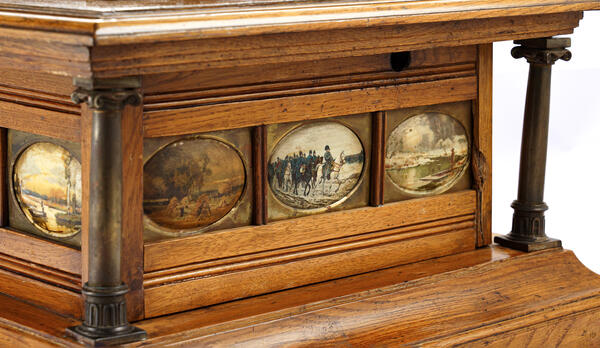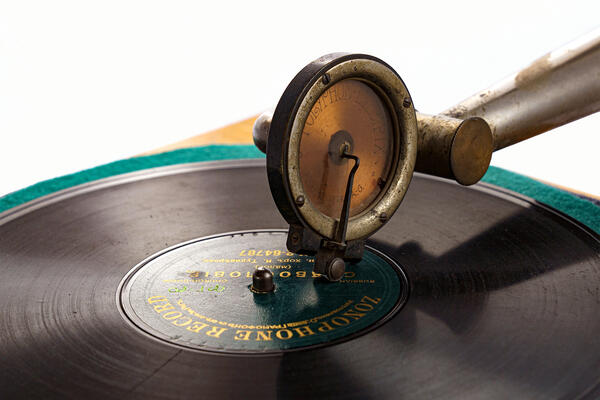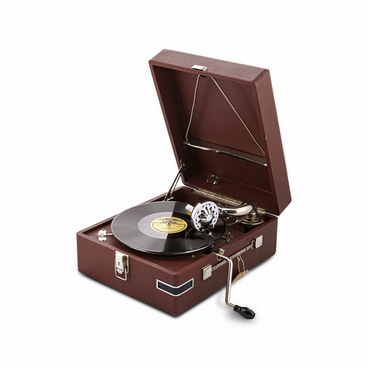A gramophone is a device for the reproduction of recorded sound. It was designed based on the phonograph, which was invented by Thomas Edison. The phonograph was far from perfect, as its reproduction of sounds was distorted. Emile Berliner decided to improve the design. In 1887, he was granted a patent for what he called the gramophone. He managed to fix the disadvantages of the phonograph. The gramophone produced a louder sound of higher quality with less distortion.
The gramophone displayed at the Lipetsk Regional Museum of Local Lore includes a light brown wooden box with a hinged lid, a spring-driven mechanism that rotates a metal turntable with an ebony record, and a diaphragm with a metal stylus. As the spring-driven mechanism rotates, the stylus traces the spiral groove on the ebonite record, making the diaphragm vibrate, with the vibrations amplified in the large flaring horn. The golden horn is both a decorative feature and the largest component of the record-playing device. On the sides of the wooden case, there are nine oval-shaped holes with colorful miniature paintings.






